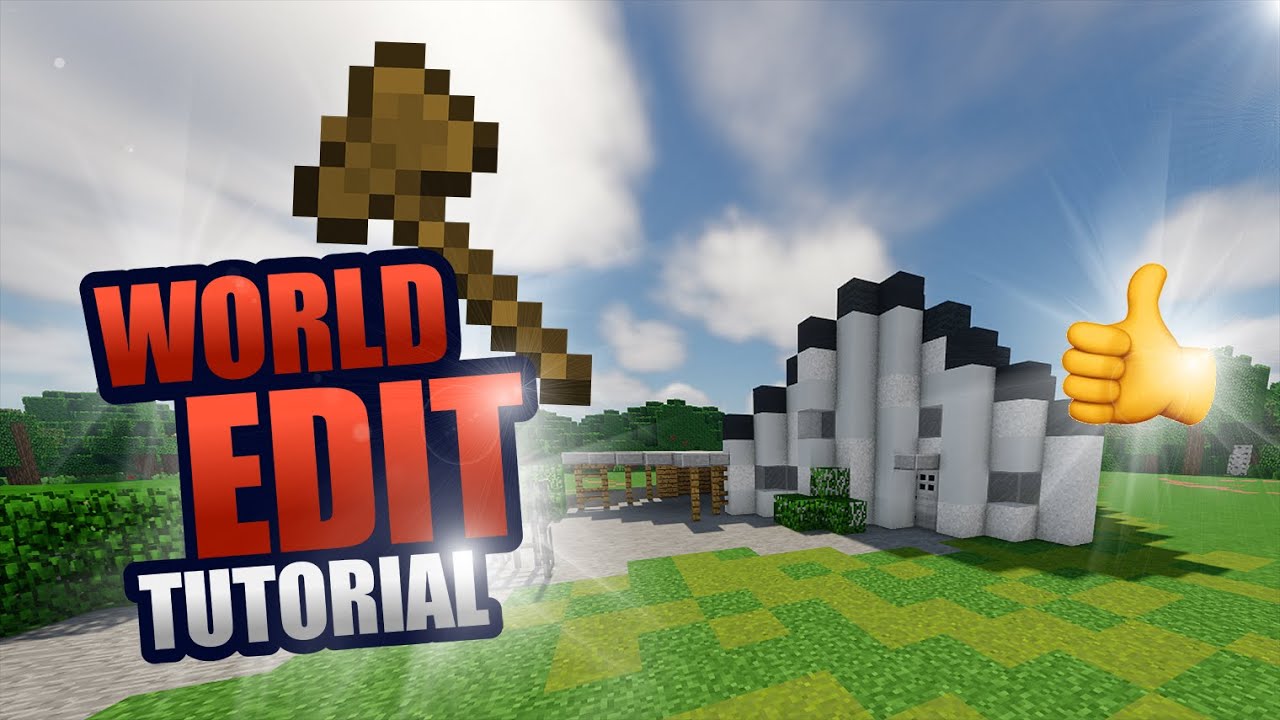Fabric Modding Tutorial - Minecraft 1.20: Custom Loot Tables | #5
Summary
TLDRIn diesem Tutorial wird gezeigt, wie man benutzerdefinierte Beutetabellen zu Minecraft und einem Mod hinzufügt. Beutetabellen bestimmen, welche Gegenstände fallen, wenn man Blöcke zerstört oder bestimmen, welche Gegenstände in Truhen in bestimmten Strukturen enthalten sind. Es wird gezeigt, wie man Beutetabellen für benutzerdefinierte Blöcke erstellt und diese Blöcke zu Tags hinzufügt, um festzulegen, welche Werkzeuge benötigt werden, um sie abbauen zu können. Zusätzlich wird das Hinzufügen von Erzblöcken und deren Beutetabellen behandelt, einschließlich der Anpassung der Erfahrungspunkte, die fallen, wenn sie zerstört werden.
Takeaways
- 😀 Die Loot-Tabellen in Minecraft bestimmen, was fallen gelassen wird, wenn man einen Block zerstört oder bestimmte Items in Truhen in bestimmten Strukturen findet.
- 🔨 Um benutzerdefinierte Loot-Tabellen hinzuzufügen, müssen Verzeichnisse wie 'data/<Mod-ID>/loot_tables/blocks' erstellt und entsprechende JSON-Dateien erstellt werden.
- 📂 Die JSON-Dateien für Loot-Tabellen müssen den Namen der Block-Klasse entsprechen und enthalten Informationen wie Typ, Pools, Bedingungen und Einträge.
- 💥 Eine Bedingung wie 'Minecraft:survives_explosion' sorgt dafür, dass der Block auch bei einer Explosion fallen gelassen wird.
- 🛠 Loot-Tabellen können auch festlegen, welche Werkzeuge benötigt werden, um einen Block abbauen zu können, indem sie Tags wie 'needs_tool' verwenden.
- ⚒ Die Tags 'minable' und 'needs_<tool>_tool' sind wichtig, um festzulegen, mit welchen Werkzeugen ein Block abgebaut werden kann.
- 💎 Die Stärke und Erfahrungspunkte eines Blocks können durch die Verwendung von 'experience_dropping_block' und Einstellungen für die Stärke und 'uniformIntProvider' angepasst werden.
- 📝 Die Übersetzung und Textur der neuen Blöcke müssen ebenfalls aktualisiert werden, um sie im Spiel korrekt anzeigen zu lassen.
- 🔗 Es wird empfohlen, die Loot-Tabellen der originalen Minecraft-Blöcke zu überprüfen, um die richtigen Werte für die eigenen Mods zu ermitteln.
- 🔄 Der Prozess der Erstellung von Loot-Tabellen und Tags kann etwas umständlich sein, aber es gibt Tools und externe Bibliotheken, die dies später vereinfachen können.
Q & A
Was ist das Hauptthema des Video-Tutorials?
-Das Hauptthema des Video-Tutorials ist das Hinzufügen von benutzerdefinierten Beutetabellen zu Minecraft und einem eigenen Mod.
Was bestimmen Beutetabellen in Minecraft?
-Beutetabellen bestimmen, welche Gegenstände fallen, wenn man Blöcke zerstört oder bestimmte Strukturen öffnet, sowie welche Gegenstände in Truhen in bestimmten Strukturen enthalten sind.
Wie wird eine neue Beutetabelle für einen benutzerdefinierten Block erstellt?
-Zunächst muss ein neues Verzeichnis namens 'loot_tables' erstellt werden, gefolgt von einem Unterverzeichnis namens 'blocks'. Dort wird eine JSON-Datei mit dem Namen des Blocks erstellt, die die Beutetabelle definiert.
Was ist ein 'Pool' in Bezug auf Beutetabellen?
-Ein 'Pool' ist eine Liste oder ein Array, das definiert, welche Gegenstände in der Beute fallen können. In dem Tutorial wird ein einzelner Pool mit null Bonuswürfeln und einer Bedingung definiert.
Wie wird sichergestellt, dass ein Block bei einer Explosion fällt?
-Durch die Definition einer Bedingung 'Minecraft:survives_explosion' in der Beutetabelle, wird sichergestellt, dass der Block auch bei einer Explosion fällt.
Warum müssen Blockdefinitionen in bestimmten Tags hinzugefügt werden?
-Blockdefinitionen müssen zu Tags hinzugefügt werden, um festzulegen, ob sie mit bestimmten Werkzeugen gezielt werden können, wie zum Beispiel mit einer Axt, einem Spaten oder einer Schaufel.
Was bedeuten die Tags 'minable' und 'needs_tool_level'?
-Der Tag 'minable' bestimmt, ob ein Block mit einer bestimmten Werkzeugkategorie abgebaut werden kann, während 'needs_tool_level' festlegt, welcher Mindestwerkzeuglevel benötigt wird, um den Block abbauen zu können.
Wie wird der Erfahrungswert eines Blocks festgelegt?
-Der Erfahrungswert wird durch den 'experience_provider' in der Blockdefinition festgelegt, wobei ein zufälliger Bereich von Erfahrungswerten definiert wird, der beim Abbau fallen kann.
Wie kann man die Stärke eines Erzblocks im Vergleich zu anderen Erzen anpassen?
-Die Stärke eines Erzblocks wird in der Blockdefinition festgelegt und kann durch Anpassen des 'strength'-Parameters im Vergleich zu anderen Erzen wie Stein oder Netherrack angepasst werden.
Wo kann man Beispiele für vorhandene Beutetabellen in Minecraft finden?
-Beispiele für vorhandene Beutetabellen in Minecraft können im 'Minecraft'-Verzeichnis der externen Bibliotheken unter 'data/loot_tables/blocks' gefunden werden.
Outlines

Dieser Bereich ist nur für Premium-Benutzer verfügbar. Bitte führen Sie ein Upgrade durch, um auf diesen Abschnitt zuzugreifen.
Upgrade durchführenMindmap

Dieser Bereich ist nur für Premium-Benutzer verfügbar. Bitte führen Sie ein Upgrade durch, um auf diesen Abschnitt zuzugreifen.
Upgrade durchführenKeywords

Dieser Bereich ist nur für Premium-Benutzer verfügbar. Bitte führen Sie ein Upgrade durch, um auf diesen Abschnitt zuzugreifen.
Upgrade durchführenHighlights

Dieser Bereich ist nur für Premium-Benutzer verfügbar. Bitte führen Sie ein Upgrade durch, um auf diesen Abschnitt zuzugreifen.
Upgrade durchführenTranscripts

Dieser Bereich ist nur für Premium-Benutzer verfügbar. Bitte führen Sie ein Upgrade durch, um auf diesen Abschnitt zuzugreifen.
Upgrade durchführenWeitere ähnliche Videos ansehen

MotoPi Alarm Tutorial | Raspberry Pi Motorcycle Alarm

NeoForge Modding Tutorial - Minecraft 1.21: Getting Started | #1

HttpSession

Schneller Häuser in Minecraft mit Worldedit bauen || Worldedit basics Tutorial

Mobile Reporting: Der Schnitt | Videoworkshop (3/3) | SPIEGEL Ed

How to Create Post Carousel Slider on Generatepress Without Plugin

Ich programmiere MINECRAFT mit 40 Zeilen Code!
5.0 / 5 (0 votes)